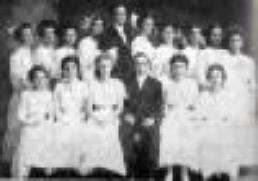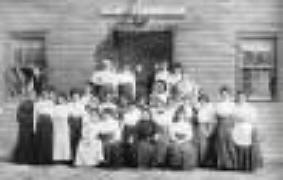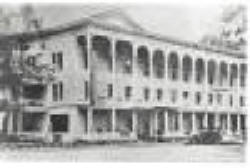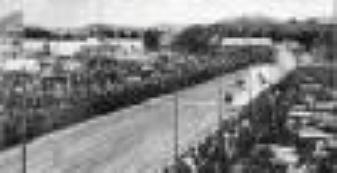|
|
|
Last time: In Chapters I–III we began our trek back to the Cambridge Patent of 1761 by first stopping a mere 50 years ago in the Cambridge of 1961.
Chapter IV: 100 Years Ago – 1911, The Modern World In the ten decades since 1911, more and more Americans have reached the century mark through improved health care and better informed life style choices, giving them the three billion plus heartbeats to make the journey. The last of the doughboys of the Great War, Frank Buckles (of WV), has now been laid to rest, so the longest memories are those of their younger siblings. Many still recall the pall of war gathering over Europe in the teens and the horrific news of trench warfare and mustard gas, coupled with the influenza pandemic of the time, but the Armistice of 1918 brought a measure of joy again to the country, and soon the American Legion and local Maxson Post 634 were established (described by Lance Allen Wang in a recent issue of this paper.) The US Census of 1910 registered 93 million, the past decade’s growth of 20%; nine million lived in New York State by 1911. Ellis Island was flooded by European immigrants who fanned out across the land, including many from Italy and Ireland who escaped tenements and headed up the Hudson to Cambridge. They found the small farm town it had been since settlement in the 1700s, which it largely is today. The Village President in 1911 - not Mayor until 1927 - was Charles E. Tingue (1908-1913). He presided over folks living and working in many of the same stately homes and red brick business blocks of today – including one signature railroad inn, the Cambridge Hotel – strung along Main and Park and about the adjacent grid of streets. Toward the last of the 19th century, post-Civil War architecture went up, mostly classic late-Victorian, a bit of Greek-revival at the Rice Mansion, and Tiffany appointments found at St. Luke’s Church; by 1978 these earned the Village its rightful role on the National Register of Historic Places. 1911 was but two years before the memorable yellow bricks were laid down over the dirt and gravel, east and west along Main, to curtail dust from droughts and the muck of thunderstorms. This was a year, too, when jalopies were limited to 10 MPH (increased to 15 in ‘14); a year when Stop signs were installed at the village RR crossings, present since 1852 when the Albany and Rutland ran tracks though town for its rolling stock hauled by smoking Baldwin 4-4-0s. For the first time, the Village Board discussed establishing a dump at the south end of Pearl abutting the Owl Kill swamp. This was also the last year Cambridge dealt with Saturday night rowdies in a local holding tank as the overnight service moved to Salem and the new Washington County jailhouse. Cambridge High School graduated 16 seniors in 1911, two young gents and 14 ladies, in an era when the American woman emerged from the kitchen and laundry; the vote was around the corner with the 19th Amendment in 1920. They went to work across the land, and in Cambridge at the Rice
Seed Company, the largest employer in town, and Tim & Co Shirt Manufacturer. Tragically in NYC that year a fire at the Triangle Shirtwaist Co. took 146 lives, driving improved safety and health laws in factories across America, further exposed by the muckrakers of Upton Sinclair’s generation. The Cambridge Water Works was 25 years old, supplying cool drinking water indoors throughout the village. Good pressure also fed the fire hydrants in 1911, as the venerable JJ Gray, the old “box on wheels”, imbibed still from this reliable source to launch a grand stream onto any blaze via the manual pumps, called hand brakes, along with the day’s modern steamers. In the summer of 1911, the Great Cambridge Fair (1890-ca 1947) sported the 46-star flag, four rows of eight, two of seven. At least one birth and a marriage occurred in town to families with names familiar to today’s older reader. One was associated with a grocery store: Anna McWhorter, younger sister of Bob (Jr.), was born to Robert (Sr.) and Anna (McMorris). Both gentlemen ran McWhorter’s Supermarket over the years at Main and Union, until the son’s passing in the late ‘70s, when it became the IGA. The other managed a local business and the weekly Washington County Post. Edward and Fannie Cullinan married in 1911 and had sons Stuart, who was President of Cambridge Hinge Tube; and Gardner, who operated the WCP for two decades (1945-66), and was also a director of The Mary McClellan Hospital for as long. Click on pictures to enlarge In the world and national news reported in the Post, Brit Hiram Bingham “rediscovered” Peru’s Machu Picchu, which became a draw for many a hardy traveler. The Mexican Revolution spilled over the border into AZ Territory (not a state until 1912 along with NM). Today’s local interest in Fenway Park germinated with groundbreaking in 1911. An airplane landed on a ship’s deck for the first time, on the USS Pennsylvania in San Francisco Bay, giving birth to Naval Aviation. And the Army adopted the M1911 45-caliber pistol, the standard sidearm for decades. The US House was set at 435 Reps, and the Supremes declared Standard Oil a monopoly, ordering it dissolved; SO became ESSO, then later Exxon across the USA. IBM incorporated as CTR, Computing Tabulating Recording Corp. A US patent was filed this year for an electric engine starting device and Chevrolet entered the market to compete with Ford’s Model T, while the initial Indy 500 was run and won by Ray Harroun in his Marmon Wasp. One of our great American patriots first saw the light of day in 1911, a man who’d halt runaway inflation in the 1980s and spurred a record GDP growth that gave every citizen access to the first-gen personal computer. He drove the Soviets back on their heels and, most importantly, restored pride in America for the first time since Ike. Ronald Reagan was born in small-town America (Tampico, IL). His connection to our own? With the 1988 Bicentennial of the Town of Cambridge, our 40th President issued the following proclamation on White House stationery, dated May 24, 1988 (found in Old Cambridge 1788-1988): “To the Citizens of Cambridge, New York: I am pleased to send warm greetings for the 200th anniversary of Cambridge. Each city and town of our great country is unique. But all are bound together in the love of the United States. We are fortunate to live in a nation of strong and proud communities where everyone has a chance for success and the blessings of liberty and freedom can be enjoyed by all, regardless of background. As you commemorate this anniversary, you have a splendid opportunity to renew your commitment to preserving your spirit which has forged America into a land of wonder. I am proud to join you in making such a commitment on this historic occasion for the people of Cambridge. With hearty congratulations and best wishes for continued milestones, Ronald Reagan (signature).” So as not to disappoint the Gipper, today we take a new turn at saluting another piece of the past on this occasion, the 250-year milestone of the Cambridge Patent. While the Cambridge District retains much of its pioneering farm and market infrastructure developed so long ago, a measure of local commerce and light industry also thrives on time-hardened Yankee ingenuity yet tempered by a new 21st-century American spirit. And today many of the citizens of Cambridge forget not their English and Scotch, Welch and Irish roots and their ancestors’ land grant of a quarter millennia ago.
Next time: Chapter V: 150 Years Ago – 1861, Civil War and the Heroes of Washington County Sources include: Around Cambridge, White Creek and Jackson (K. Gottry); Cambridge Village archives; Old Cambridge 1788-1988 (R. Clay, C. Foster, R. Raymond, T. Shiland, D. Thornton); The Eagle Newspaper. The author may be reached at: tmraymond4@gmail.com
======================================================================== CAMBRIDGE HISTORY LIVES © 2011 Thomas M. Raymond 15915 SW Snowy Owl Lane Beaverton, OR 97007 tmraymond4@gmail.com Cell: 503-705-5534
|
|
|




